Related Research Articles
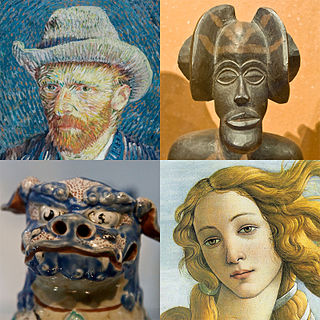
Art is a diverse range of human activity, and resulting product, that involves creative or imaginative talent expressive of technical proficiency, beauty, emotional power, or conceptual ideas.
Improvisation, often shortened to improv, is the activity of making or doing something not planned beforehand, using whatever can be found. Improvisation in the performing arts is a very spontaneous performance without specific or scripted preparation. The skills of improvisation can apply to many different faculties, across all artistic, scientific, physical, cognitive, academic, and non-academic disciplines; see Applied improvisation.

Tadeusz Kantor was a Polish painter, assemblage and Happenings artist, set designer and theatre director. Kantor is renowned for his revolutionary theatrical performances in Poland and abroad. Laureate of Witkacy Prize – Critics' Circle Award (1989).

Site-specific art is artwork created to exist in a certain place. Typically, the artist takes the location into account while planning and creating the artwork. Site-specific art is produced both by commercial artists, and independently, and can include some instances of work such as sculpture, stencil graffiti, rock balancing, and other art forms. Installations can be in urban areas, remote natural settings, or underwater.

Experimental theatre, inspired largely by Wagner's concept of Gesamtkunstwerk, began in Western theatre in the late 19th century with Alfred Jarry and his Ubu plays as a rejection of both the age in particular and, in general, the dominant ways of writing and producing plays. The term has shifted over time as the mainstream theatre world has adopted many forms that were once considered radical.

Physical theatre is a genre of theatrical performance that encompasses storytelling primarily through physical movement. Although several performance theatre disciplines are often described as "physical theatre," the genre's characteristic aspect is a reliance on the performers' physical motion rather than, or combined with, text to convey storytelling. Performers can communicate through various body gestures.
Sound art is an artistic activity in which sound is utilized as a primary medium or material. Like many genres of contemporary art, sound art may be interdisciplinary in nature, or be used in hybrid forms. According to Brandon LaBelle, sound art as a practice "harnesses, describes, analyzes, performs, and interrogates the condition of sound and the process by which it operates."

General Idea was a collective of three Canadian artists, Felix Partz, Jorge Zontal and AA Bronson, who were active from 1967 to 1994. As pioneers of early conceptual and media-based art, their collaboration became a model for artist-initiated activities and continues to be a prominent influence on subsequent generations of artists.
AA Bronson is an artist. He was a founding member of the artists' group General Idea, was president and director of Printed Matter, Inc., and started the NY Art Book Fair and the LA Art Book Fair.
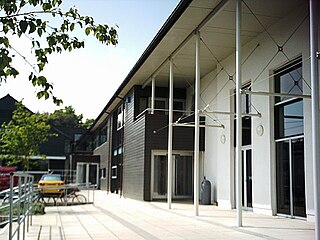
Dartington College of Arts was a specialist arts college located at Dartington Hall in the south-west of England, offering courses at degree and postgraduate level together with an arts research programme. It existed for a period of almost 50 years, from its foundation in 1961, to when it closed at Dartington in 2010. A version of the College was then re-established in what became Falmouth University, and the Dartington title was subsequently dropped. The College was one of only a few in Britain devoted exclusively to specialist practical and theoretical studies in courses spanning right across the arts. It had an international reputation as a centre for contemporary practice. As well as the courses offered, it became a meeting point for practitioners and teachers from around the world. Dartington was known not only as a place for training practitioners, but also for its emphasis on the role of the arts in the wider community.
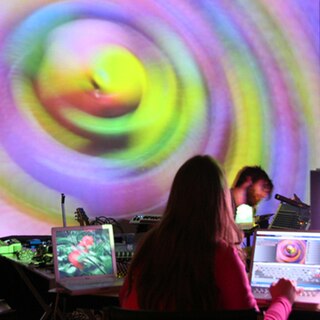
VJing is a broad designation for realtime visual performance. Characteristics of VJing are the creation or manipulation of imagery in realtime through technological mediation and for an audience, in synchronization to music. VJing often takes place at events such as concerts, nightclubs, music festivals and sometimes in combination with other performative arts. This results in a live multimedia performance that can include music, actors and dancers. The term VJing became popular in its association with MTV's Video Jockey but its origins date back to the New York club scene of the 1970s. In both situations VJing is the manipulation or selection of visuals, the same way DJing is a selection and manipulation of audio.
Site-specific theatre is a theatrical production that is performed at a unique, specially adapted location other than a standard theatre. This unique site may have been built without any intention of serving theatrical purposes. It may also simply be an unconventional space for theatre. Site-specific theatre seeks to use the properties of a unique site's landscape, rather than a typical theatre stage, to add depth to a theatrical production. Sites are selected based on their ability to amplify storytelling and form a more vivid backdrop for the actors in a theatrical production. A performance in a traditional theatre venue that has been transformed to resemble a specific space, can also be considered as site-specific, as long as it no longer has the functionality that a traditional theatre would have.
Devised theatre – frequently called collective creation – is a method of theatre-making in which the script or performance score originates from collaborative, often improvisatory work by a performing ensemble. The ensemble is typically made up of actors, but other categories of theatre practitioners may also be central to this process of generative collaboration, such as visual artists, composers, and choreographers; indeed, in many instances, the contributions of collaborating artists may transcend professional specialization. This process is similar to that of commedia dell'arte and street theatre. It also shares some common principles with improvisational theatre; however, in devising, improvisation is typically confined to the creation process: by the time a devised piece is presented to the public, it usually has a fixed, or partly fixed form. Historically, devised theatre is also strongly aligned with physical theatre, due at least in part to the fact that training in such physical performance forms as commedia, mime, and clown tends to produce an actor-creator with much to contribute to the creation of original work.

Gordon Monahan is a Canadian pianist and composer of experimental music. He has been active since at least 1978. Along with his own work, he has performed works by other composers such as John Cage, James Tenney, Udo Kasemets and Roberto Paci Dalò. He has also created site-specific sound installations. In 1992-93 he was artist-in-residence with the DAAD in Berlin where he lived until 2006.
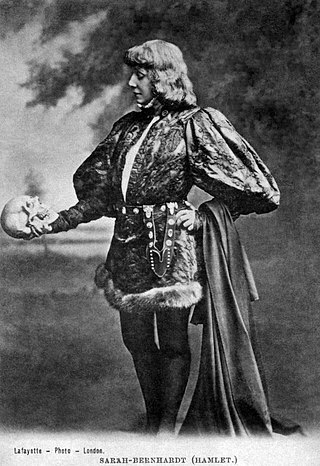
Theatre or theater is a collaborative form of performing art that uses live performers, usually actors or actresses, to present the experience of a real or imagined event before a live audience in a specific place, often a stage. The performers may communicate this experience to the audience through combinations of gesture, speech, song, music, and dance. It is the oldest form of drama, though live theatre has now been joined by modern recorded forms. Elements of art, such as painted scenery and stagecraft such as lighting are used to enhance the physicality, presence and immediacy of the experience. Places, normally buildings, where performances regularly take place are also called "theatres", as derived from the Ancient Greek θέατρον, itself from θεάομαι.

Commedia dell'arte was an early form of professional theatre, originating from Italian theatre, that was popular throughout Europe between the 16th and 18th centuries. It was formerly called Italian comedy in English and is also known as commedia alla maschera, commedia improvviso, and commedia dell'arte all'improvviso. Characterized by masked "types", commedia was responsible for the rise of actresses such as Isabella Andreini and improvised performances based on sketches or scenarios. A commedia, such as The Tooth Puller, is both scripted and improvised. Characters' entrances and exits are scripted. A special characteristic of commedia is the lazzo, a joke or "something foolish or witty", usually well known to the performers and to some extent a scripted routine. Another characteristic of commedia is pantomime, which is mostly used by the character Arlecchino, now better known as Harlequin.
Gerard Byrne is an Irish artist. He works primarily in film, video and photography in large-scale installations which reconstruct imagery found in magazine published in the 1970s through the 1980s.
Althea Thauberger is a Canadian visual artist, film maker and educator. Her work engages relational practices rooted in sustained collaborations with groups or communities through social, theatrical and textual processes that often operate outside the studio/gallery environment. Her varied research-centric projects have taken her to military base, remote societies and institutional spaces that result in performances, films, videos, audio recordings and books, and involve provocative reflections of social, political, institutional and aesthetic power relations. Her recent projects involve an extended engagement with the sites of their production in order to trace broader social and ideological histories.
Forced Entertainment is an experimental theatre company based in Sheffield, England, founded by Tim Etchells in 1984.
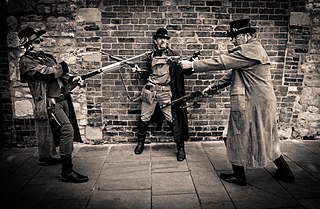
In cinema, a trope is what The Art Direction Handbook for Film defines as "a universally identified image imbued with several layers of contextual meaning creating a new visual metaphor".
References
- ↑ Pavis, Patrica (1998). Dictionary of the Theatre: Terms, Concepts, and Analysis. Toronto: University of Toronto Press. pp. 337–338.
- ↑ Pearson, Mike (2010). Site-Specific Performance. New York: Palgrave Macmillan. p. 7. ISBN 978-0-230-57671-1.
- ↑ Nick, Kaye (2008). Site-Specific Art: Performance, Place and Documentation. Routledge. ISBN 978-0415185592. OCLC 756369595.